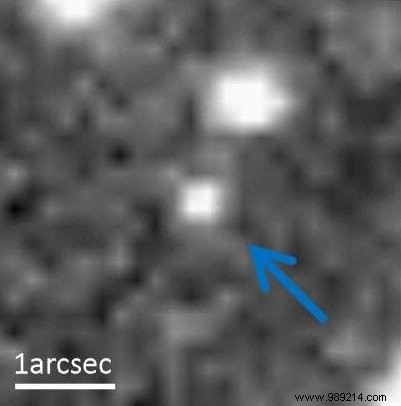A team of astronomers recently focused on GN-z11, considered for some years to be the oldest galaxy detected. From our point of view, the researchers confirm that this galaxy is indeed the most distant ever observed.
As soon as it was discovered about four years ago, GN-z11, found in the constellation Ursa Major, was considered the most distant and oldest known galaxy in the observable universe. And for good reason, according to Hubble observations, astronomers had estimated that this object had formed more or less 13.4 billion years ago. That's only about 400 million years after the Big Bang.
In a new study, a team of astronomers led by Nobunari Kashikawa of the University of Tokyo sought to clarify these measurements. To do this, they relied on the redshift technique, widely used in cosmology.
In concrete terms, as light travels immense distances in the universe, its wavelengths stretch as it expands, pulling further downward. red. In other words, the longer a photon travels in expanding space, the more its wavelength stretches because of this expansion. By measuring the redshift of a galaxy, researchers can then determine precisely how far away it is.
According to research paper, published in Nature Astronomy , the team targeted certain chemical signatures, called emission lines, known to imprint distinct patterns in light from distant objects. By measuring how stretched these tell-tale signatures are, astronomers were then able to infer how far the light traveled from the targeted galaxy, revealing the distance of the galaxy itself.
"We focused on ultraviolet light specifically, because it's in that area of the electromagnetic spectrum where we expected to find the red-shifted chemical signatures “, details Nobunari Kashikawa.

Employing near-infrared spectroscopic observations using the MOSFIRE spectrograph, available at the WM Keck Observatory in Hawaii, Kashikawa and his team clarified the value of its "redshift" (z =10.957) by a factor of 100. These measurements have confirmed that GN-z11 is indeed the most distant object ever observed by humanity, formed 13.4 billion years ago. Back then, the Universe was only 3% of its current age .
In collaboration with a team led by Linhua Jiang, of Peking University, the astronomers also explain that these photons, which made it possible to determine the distance of GN-z11, were originally those of a very fleeting flash of light. During these observations, the galaxy indeed appeared hundreds of times brighter for just under three minutes.
According to the researchers, it was probably the emerged tip of a long gamma-ray burst, type of GRB (gamma-ray bursts), generated following the explosion of a star.